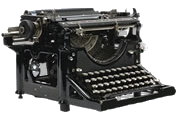Anticipating the American Century (The Spectator, 1921)
Attached is a review of The American Era by H.H. Powers. The reviewer disputes the author’s argument that the First World War made Britain a weaker nation:
Mr. Powers’ interpretation of the war and it’s squeals is that the Anglo-Saxon idea, having triumphed, will set the tone for the whole world. He also believes that the real depository and expositor of this idea in the future must be America. Britain, he thinks,in spite of her great geographical gains from the war– he considerately exaggerates these, has sung her swan song of leadership.
A similar article about American power can be read here.
Anticipating the American Century (The Spectator, 1921) Read More »
